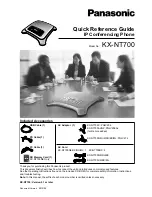
9-14
Cisco Security Appliance Command Line Configuration Guide
OL-12172-03
Chapter 9 Configuring IP Routing
Configuring OSPF
NSSA importsType 7 autonomous system external routes within an NSSA area by redistribution. These
Type 7 LSAs are translated into Type 5 LSAs by NSSA ABRs, which are flooded throughout the whole
routing domain. Summarization and filtering are supported during the translation.
You can simplify administration if you are an ISP or a network administrator that must connect a central
site using OSPF to a remote site that is using a different routing protocol using NSSA.
Before the implementation of NSSA, the connection between the corporate site border router and the
remote router could not be run as an OSPF stub area because routes for the remote site could not be
redistributed into the stub area, and two routing protocols needed to be maintained. A simple protocol
such as RIP was usually run and handled the redistribution. With NSSA, you can extend OSPF to cover
the remote connection by defining the area between the corporate router and the remote router as an
NSSA.
To specify area parameters for your network as needed to configure OSPF NSSA, perform the following
steps:
Step 1
If you have not already done so, enter the router configuration mode for the OSPF process you want to
configure by entering the following command:
hostname(config)#
router ospf
process_id
Step 2
Enter any of the following commands:
•
To define an NSSA area, enter the following command:
hostname(config-router)#
area
area-id
nssa
[
no-redistribution
]
[
default-information-originate
]
•
To summarize groups of addresses, enter the following command:
hostname(config-router)#
summary address
ip_address mask
[
not-advertise
] [
tag
tag
]
This command helps reduce the size of the routing table. Using this command for OSPF causes an
OSPF ASBR to advertise one external route as an aggregate for all redistributed routes that are
covered by the address.
OSPF does not support
summary-address 0.0.0.0 0.0.0.0
.
In the following example, the summary address 10.1.0.0 includes address 10.1.1.0, 10.1.2.0,
10.1.3.0, and so on. Only the address 10.1.0.0 is advertised in an external link-state advertisement:
hostname(config-router)#
summary-address 10.1.1.0 255.255.0.0
Before you use this feature, consider these guidelines:
–
You can set a Type 7 default route that can be used to reach external destinations. When
configured, the router generates a Type 7 default into the NSSA or the NSSA area boundary
router.
–
Every router within the same area must agree that the area is NSSA; otherwise, the routers will
not be able to communicate.
Summary of Contents for 500 Series
Page 38: ...Contents xxxviii Cisco Security Appliance Command Line Configuration Guide OL 12172 03 ...
Page 45: ...P A R T 1 Getting Started and General Information ...
Page 46: ......
Page 277: ...P A R T 2 Configuring the Firewall ...
Page 278: ......
Page 561: ...P A R T 3 Configuring VPN ...
Page 562: ......
Page 891: ...P A R T 4 System Administration ...
Page 892: ......
Page 975: ...P A R T 5 Reference ...
Page 976: ......
















































